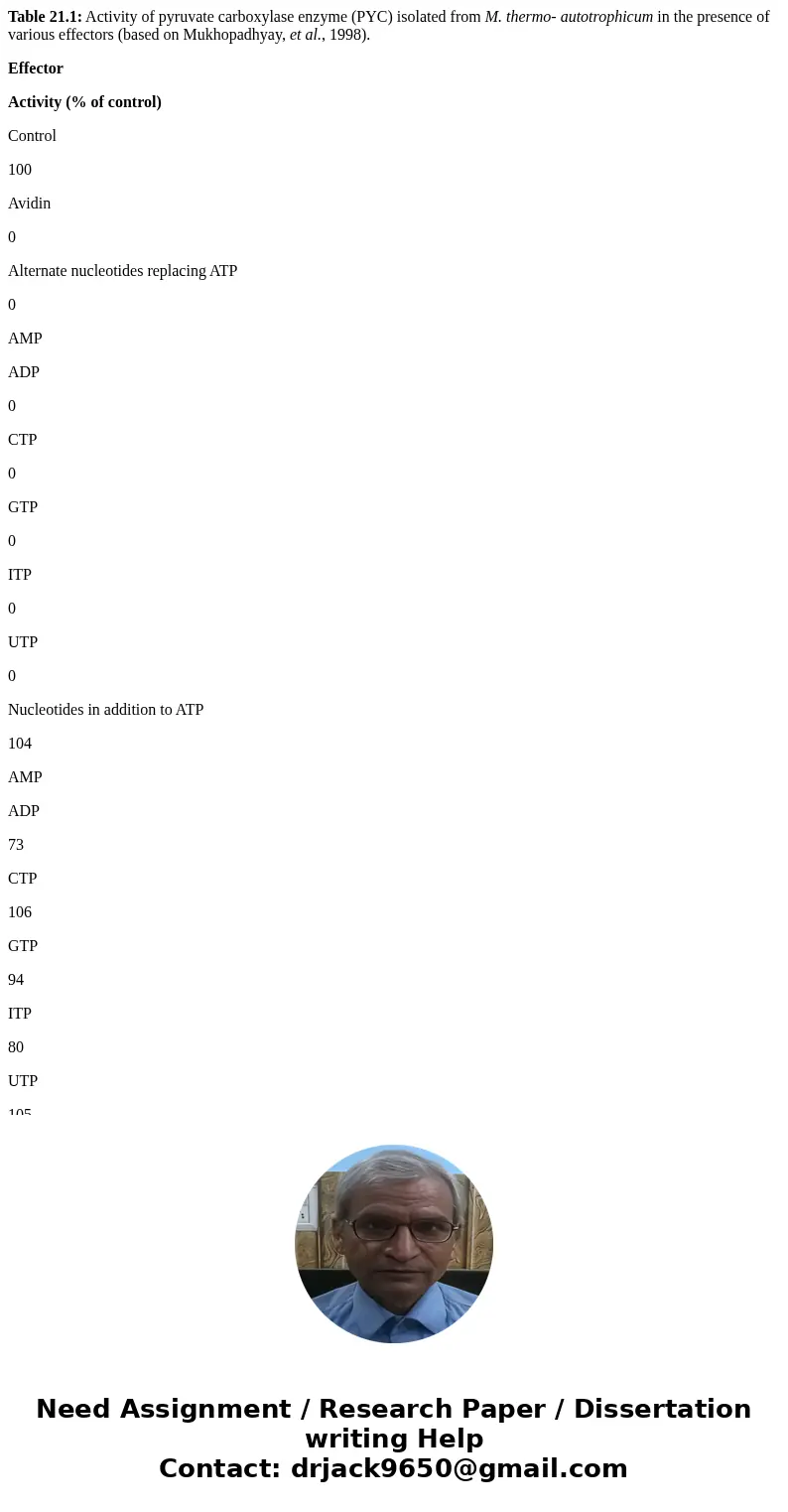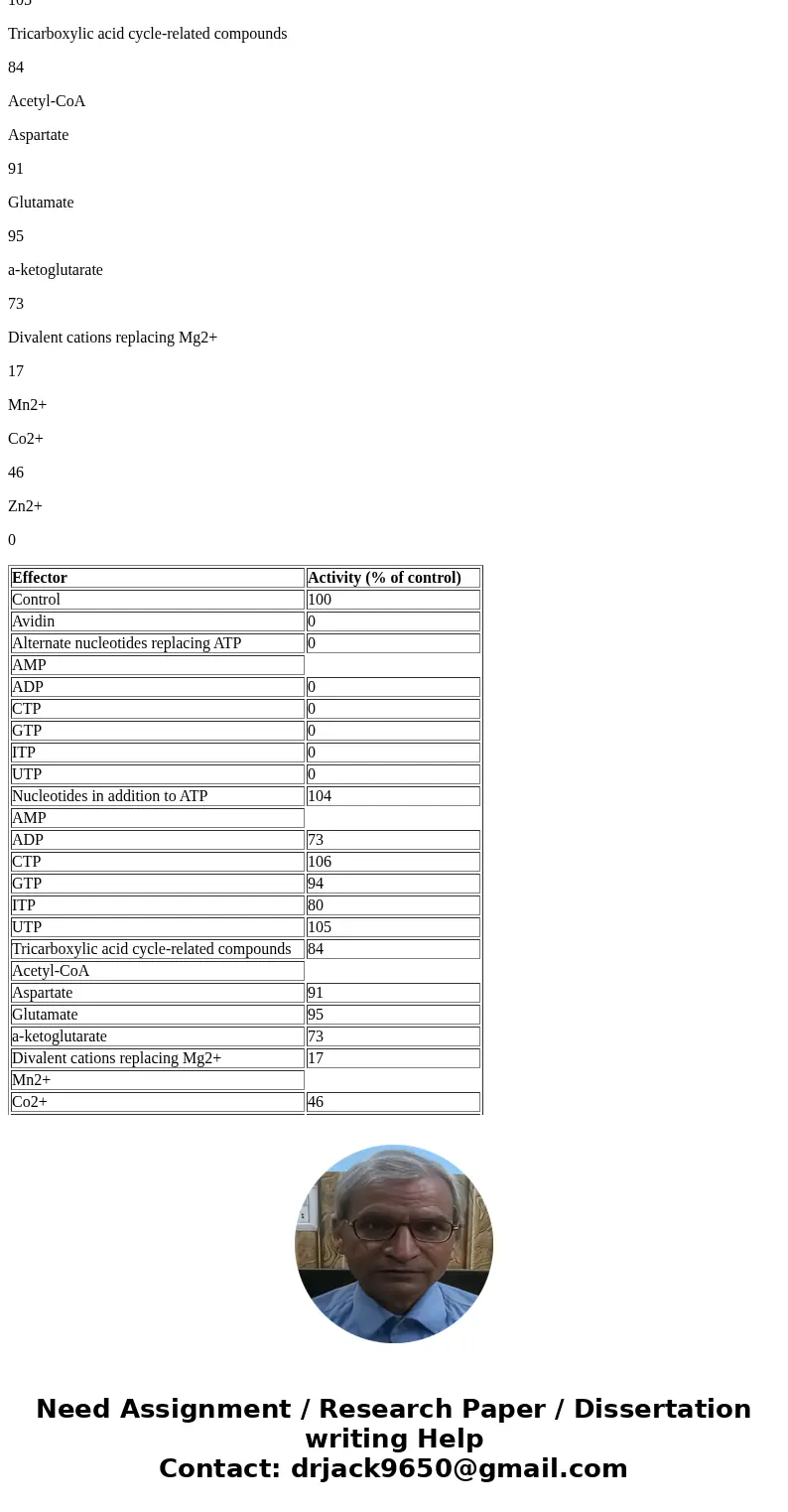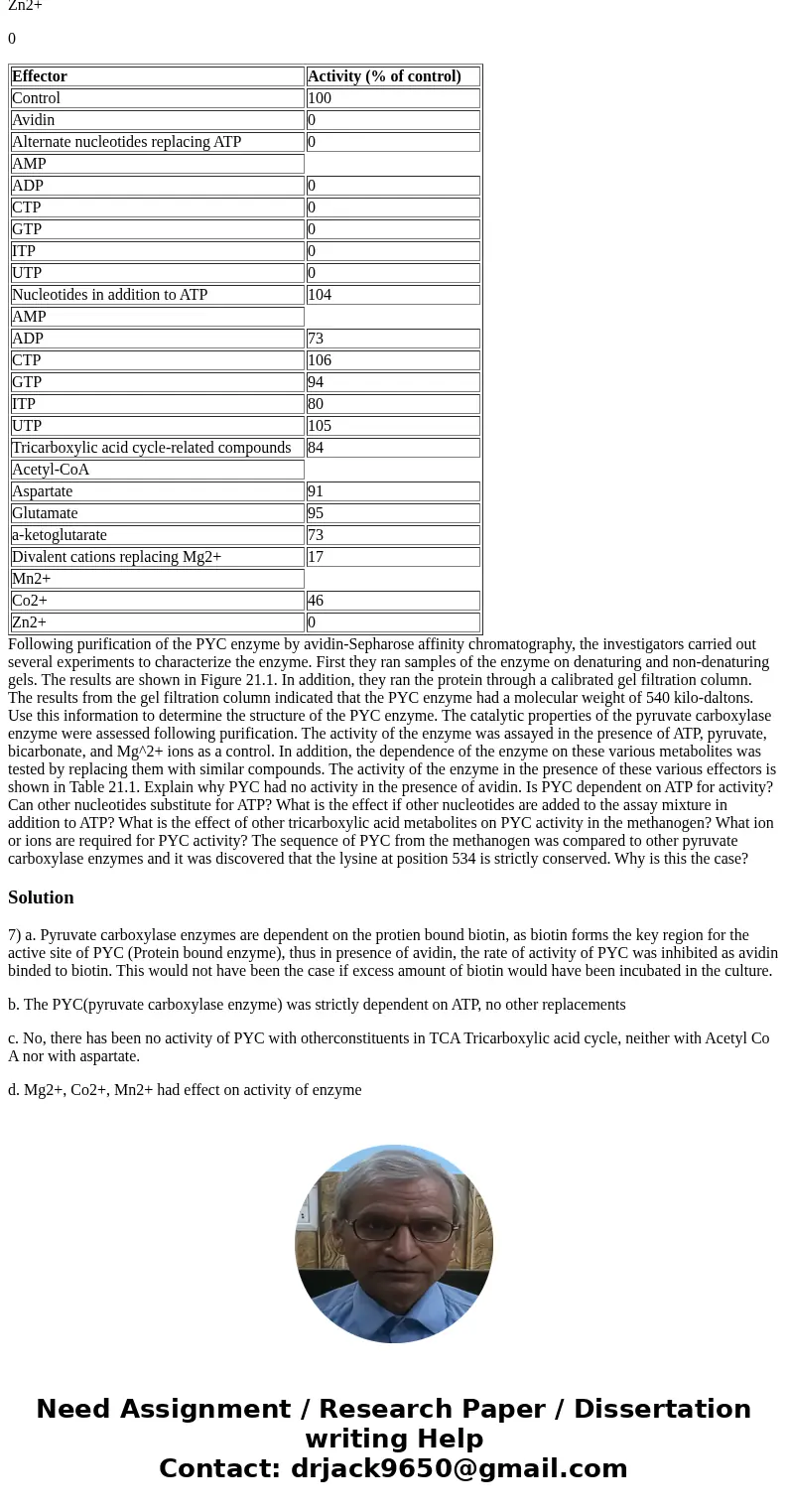Table 211 Activity of pyruvate carboxylase enzyme PYC isolat
Table 21.1: Activity of pyruvate carboxylase enzyme (PYC) isolated from M. thermo- autotrophicum in the presence of various effectors (based on Mukhopadhyay, et al., 1998).
Effector
Activity (% of control)
Control
100
Avidin
0
Alternate nucleotides replacing ATP
0
AMP
ADP
0
CTP
0
GTP
0
ITP
0
UTP
0
Nucleotides in addition to ATP
104
AMP
ADP
73
CTP
106
GTP
94
ITP
80
UTP
105
Tricarboxylic acid cycle-related compounds
84
Acetyl-CoA
Aspartate
91
Glutamate
95
a-ketoglutarate
73
Divalent cations replacing Mg2+
17
Mn2+
Co2+
46
Zn2+
0
| Effector | Activity (% of control) |
| Control | 100 |
| Avidin | 0 |
| Alternate nucleotides replacing ATP | 0 |
| AMP | |
| ADP | 0 |
| CTP | 0 |
| GTP | 0 |
| ITP | 0 |
| UTP | 0 |
| Nucleotides in addition to ATP | 104 |
| AMP | |
| ADP | 73 |
| CTP | 106 |
| GTP | 94 |
| ITP | 80 |
| UTP | 105 |
| Tricarboxylic acid cycle-related compounds | 84 |
| Acetyl-CoA | |
| Aspartate | 91 |
| Glutamate | 95 |
| a-ketoglutarate | 73 |
| Divalent cations replacing Mg2+ | 17 |
| Mn2+ | |
| Co2+ | 46 |
| Zn2+ | 0 |
Solution
7) a. Pyruvate carboxylase enzymes are dependent on the protien bound biotin, as biotin forms the key region for the active site of PYC (Protein bound enzyme), thus in presence of avidin, the rate of activity of PYC was inhibited as avidin binded to biotin. This would not have been the case if excess amount of biotin would have been incubated in the culture.
b. The PYC(pyruvate carboxylase enzyme) was strictly dependent on ATP, no other replacements
c. No, there has been no activity of PYC with otherconstituents in TCA Tricarboxylic acid cycle, neither with Acetyl Co A nor with aspartate.
d. Mg2+, Co2+, Mn2+ had effect on activity of enzyme



 Homework Sourse
Homework Sourse